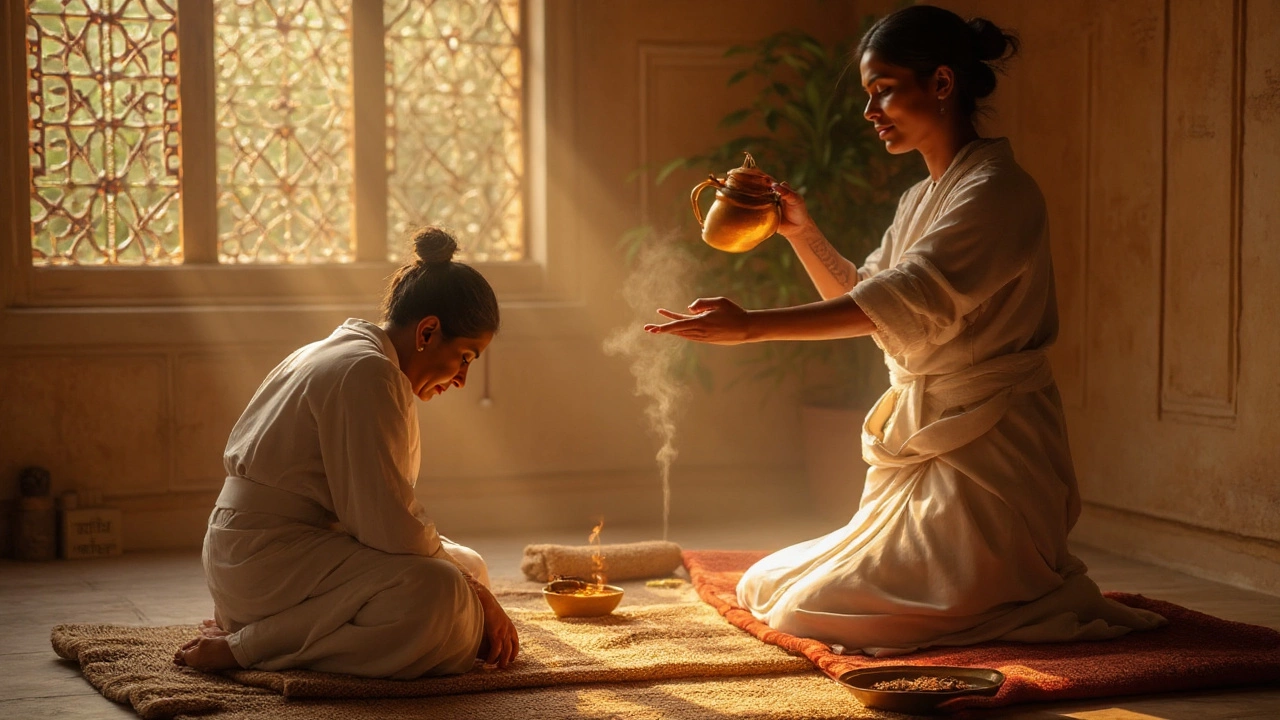Ayurvedic Massage: What It Is and Why It Matters
If you’ve heard the term "Ayurvedic massage" and wonder if it’s just another spa trend, you’re not alone. It’s a traditional Indian practice that uses warm oils, specific pressure points, and rhythmic movements to balance the body’s doshas – the three energies that, according to Ayurveda, govern health. The goal isn’t just relaxation; it’s to help your body clear out toxins, improve circulation, and calm the nervous system.
Unlike a quick Swedish rub‑down, an Ayurvedic massage follows a pattern that matches your unique constitution (Vata, Pitta, or Kapha). The therapist picks an oil infused with herbs that suit your dosha, warms it, and then massages in a way that supports digestion, sleep, and joint health. The result is a deeper sense of well‑being that can linger for days.
Core Benefits of an Ayurvedic Massage
First, the warm oil acts like a carrier for herbal compounds, helping them reach deeper tissues. This can ease chronic pain, especially in the back, knees, and shoulders. Second, the gentle strokes stimulate lymph flow, which assists the body in flushing out waste and reducing swelling. Third, because the massage follows the body’s natural rhythms, many people report better sleep and lower stress levels after a session.
People with skin issues also notice improvement. The oils often contain neem, turmeric, or sandalwood, which have antimicrobial properties. Regular sessions can make skin clearer and more hydrated without harsh chemicals. Finally, the practice supports mental clarity. The slow, mindful movements encourage a meditative state, making it easier to focus and stay calm throughout the day.All these benefits line up with the mission of Toxic Medicine Insights – helping you understand how natural therapies can work alongside modern medicine to keep you safe and healthy.
Simple Steps to Try at Home
You don’t need a certified therapist to get a taste of Ayurvedic massage. Here’s a quick routine you can do after a warm shower:
1. Choose the right oil. If you’re mostly Vata (dry, cold), go for sesame or almond oil; Pitta (hot, sharp) benefits from coconut or sunflower; Kapha (heavy, sluggish) does well with mustard or sesame mixed with a pinch of ginger powder.
2. Warm the oil. Heat a small amount in a bowl for a minute or two – it should feel comfortably warm, not hot.
3. Start with the feet. Apply oil and use circular motions with your thumbs, moving up to the calves. This awakens the circulation and prepares the rest of the body.
4. Move to the abdomen. Apply gentle clockwise circles, following the direction of digestion. This can help with bloating and improve gut function.
5. Finish with the shoulders and neck. Use long, gliding strokes from the base of the skull down the spine, then out toward the shoulders. Keep the pressure light to avoid strain.
Spend about 15‑20 minutes total. You’ll feel relaxed, and the oil will leave your skin soft.
Safety matters. If you have open wounds, severe skin infections, or are pregnant, skip the massage or consult a qualified practitioner first. People with certain heart conditions should avoid very deep pressure and stick to lighter strokes. Always test the oil on a small patch of skin before a full session to rule out allergies.
In short, Ayurvedic massage blends ancient wisdom with simple, toxin‑free techniques that can boost your physical comfort and mental calm. Whether you book a professional session or try the at‑home routine, you’re giving your body a gentle boost that supports the goals of safe, informed health care.

Ayurvedic Massage Explained: Benefits, Techniques, and How It Works
Discover what Ayurvedic massage is, its core principles, benefits, techniques, and how it differs from other massages. Learn to enjoy a holistic therapy rooted in ancient Indian wisdom.

Best Mail-Order Pharmacies: Who's Leading the Pack?
Mar, 19 2025



